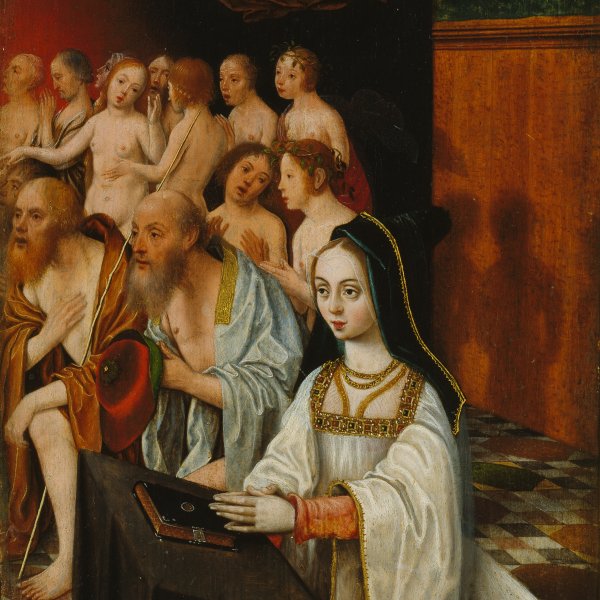Jan Mostaert
Haarlem, ca. 1475-1555/56
Mostaert is known for his portraits, altarpieces and other religious compositions. Karel van Mander erroneously stated that the artist was born in Haarlem into a noble family, but in fact he was from a prosperous family of millers. He trained with Jacob van Haarlem, who is probably the Master of the Brunswick Diptych. Mostaert is first mentioned as a painter in 1498 in a document that records his acquisition of a house in Haarlem. In 1500 he was commissioned to decorate the reliquary of Saint Bavo in the Groote Kerk, Haarlem (now lost). From this date onwards Mostaert is frequently mentioned in the archives of the painters’ guild, of which he was dean in 1507, 1543 and 1544. The number of references that locate him in Haarlem and the commissions that he executed for the church of Saint Bavo indicate that he lived and worked in that city throughout his entire career. Mostaert’s first paintings reveal the influence of Geertgen tot Sint Jans and his followers. In 1519 he became court painter to Margaret of Austria, governor of the Low Countries, and according to Van Mander remained in her service for the next eighteen years, although this seems an exaggeration.
Mostaert’s most typical works are his three-quarter length portraits in which the sitters are located in front of a landscape, their hands resting on a cushion in the foreground. His diptychs with couples are particularly elegant, including the one of Hendrik van Merode and his Wife, Franziska van Brederode (Sint Dimpnakerk, Geel). From the 1520s onwards Mostaert began to imitate the panoramic landscapes of Antwerp painters such as Patinir. The last known biographical reference to the artist dates from 1549 when he requested permission from the Haarlem town council to temporarily reside in Hoorn, where he was painting the altarpiece for the Groote Kerk.
Mostaert’s most typical works are his three-quarter length portraits in which the sitters are located in front of a landscape, their hands resting on a cushion in the foreground. His diptychs with couples are particularly elegant, including the one of Hendrik van Merode and his Wife, Franziska van Brederode (Sint Dimpnakerk, Geel). From the 1520s onwards Mostaert began to imitate the panoramic landscapes of Antwerp painters such as Patinir. The last known biographical reference to the artist dates from 1549 when he requested permission from the Haarlem town council to temporarily reside in Hoorn, where he was painting the altarpiece for the Groote Kerk.





